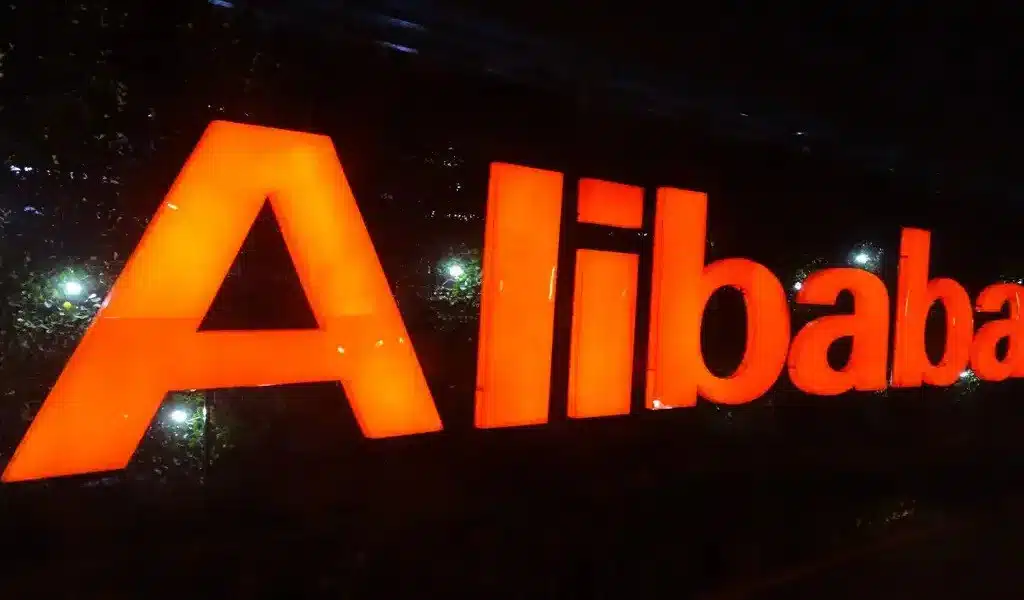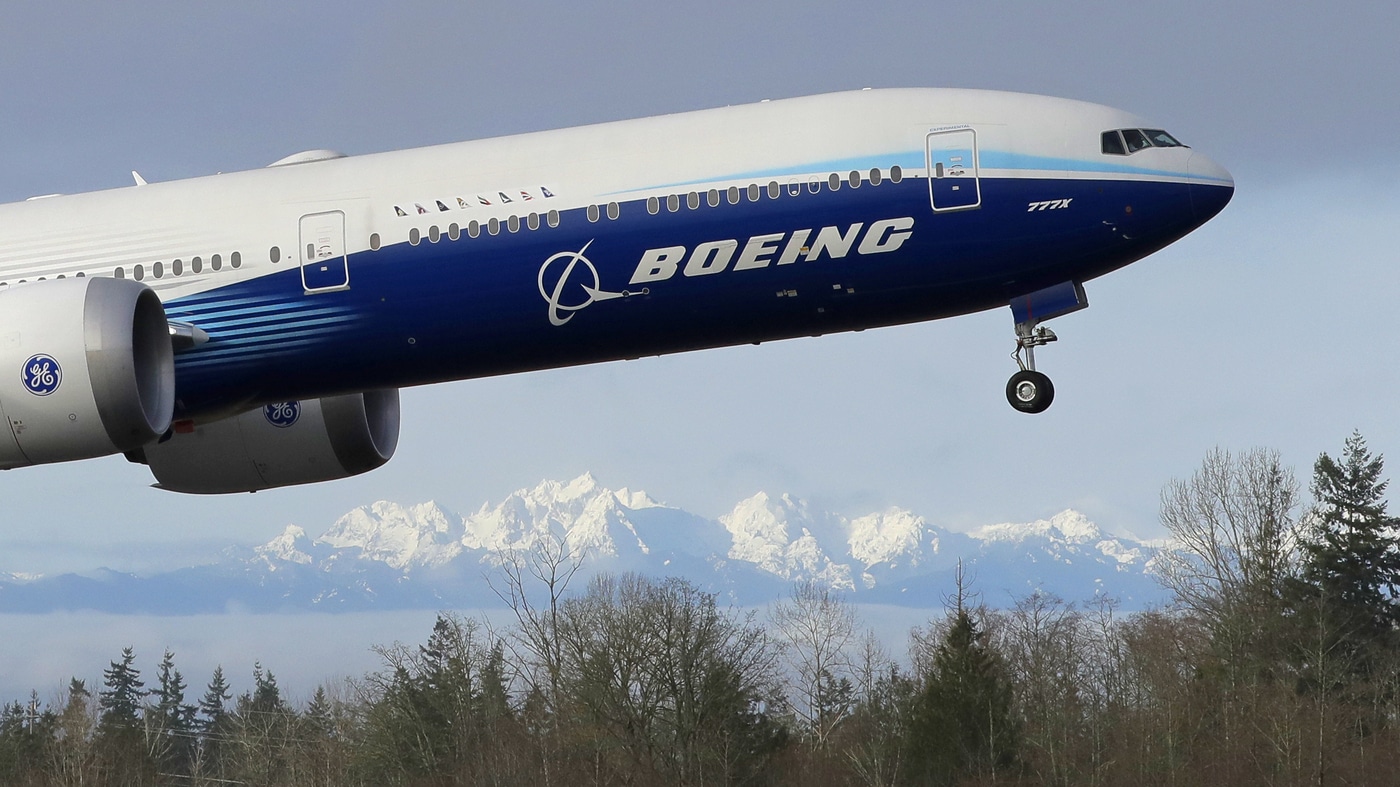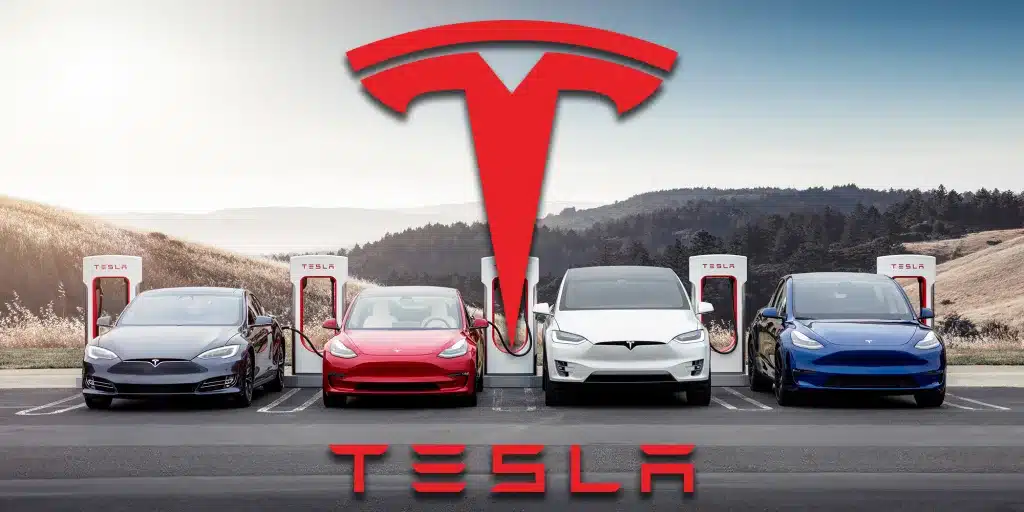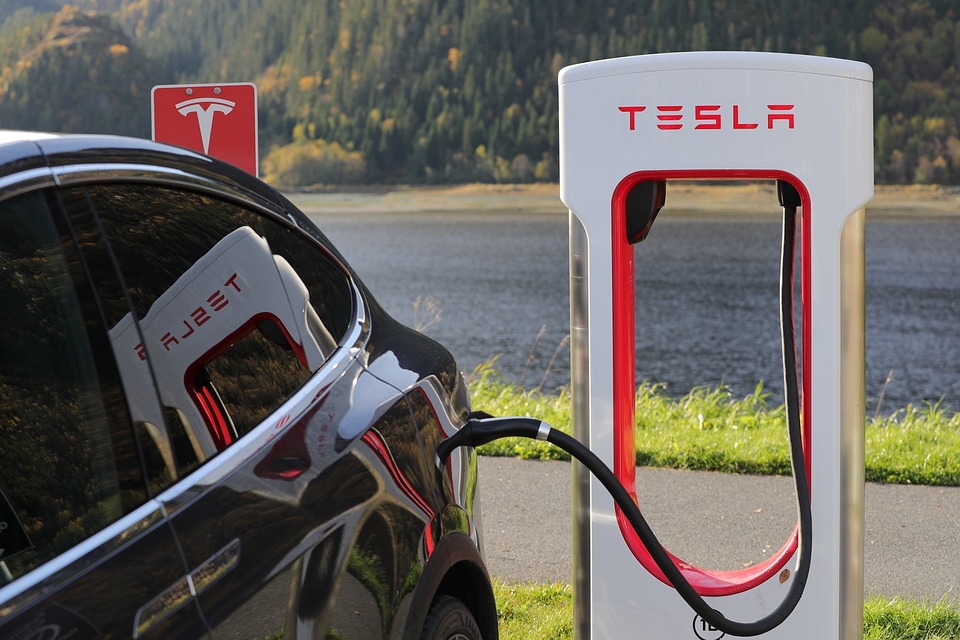Business
Alibaba will discontinue its data center operations in India and Australia.

(VOR News) – The Alibaba Cloud (or Aliyun) data facilities in Australia and India will soon be shutting down.
The business issued a statement on its website that read, “As part of Alibaba Cloud’s infrastructure strategy update, we have decided to cease operations at our data centers in Australia and India while enhancing our investment in Southeast Asia and Mexico after careful assessment.”
The two countries’ data centers, in Mumbai and Sydney, are expected to close in July and September, respectively. Data centers in Mumbai will be shut down by July 15th, and those in Australia will be shut down by September 30th.
The corporation had “issued multiple rounds of notifications and technical migration plans to affected customers” since December 2023, according to the notice.
Alibaba has also asked impacted customers to move their data to the Singapore area or another appropriate location as quickly as possible. Analysts believe that customers will not be charged for the move, even though Alibaba did not answer to an email asking for clarification on whether or not these migrations will be paid.
Also, I sent an email asking why the data centers in those two nations shut down, but nobody answered.
Concerns about growth and geopolitical tensions
Possible influences on the decision to shut down operations in both nations include geopolitical tensions and Alibaba’s struggles with the expansion of its cloud business in those two nations.
“Alibaba is closing its operations in these two countries due to the limited business opportunities in these markets,” expressed Rajiv Ranjan, associate research director at IDC.
According to Ranjan, there are a number of factors, including the level of market maturity, that contribute to the limited opportunities for business expansion in these countries.
When it comes to cloud computing, Australia is well-established and has major providers like AWS, Google, and Azure. According to Ranjan, Alibaba’s data center size betrays its restricted operations, and the company’s small client base and lack of operations make it difficult to build a respectable market position.
Contrary to the company’s tradition of building huge data centers, Ranjan explained that the data center in Australia is a colocation facility. This, he added, is also true in India, where the business has two small availability zones in Mumbai. While Google and Oracle are quickly increasing their footprint in the Indian public cloud industry, Azure and AWS remain dominant.
This creates problems for Alibaba, says Ranjan.
According to Jain, the use of Chinese brands is not well-received in both markets, but more so in India due to the stagnation of diplomatic relations between the two countries.
Mexico and Southeast Asia are on Alibaba’s expansion list.
Analysts agree that Mexico and Southeast Asia should be Alibaba Cloud’s primary investment targets.
A stronger brand presence in Southeast Asia has been achieved through Alibaba’s e-commerce operation. Their decision to focus on that sector is a direct result of that, Ranjan noted. To elaborate, Ranjan said that the data localization policy was the impetus for Alibaba to build a second availability zone in India’s data centers in 2022.
The goal of the firm, as Ranjan explained, was to get the most clients possible by using the investment.
In addition to their main client, Paytm, they have clients including Oppo, Vivo, DLF, and Reliance Entertainment in India. But according to Ranjan, their plans for expansion were thwarted since hyperscalers existed.
Alibaba’s public cloud products were on sale for up to 59% off in April. It was seen by analysts as a move to lessen the impact of competition from bigger hyperscalers in nations including the US, UK, UAE, SK, IL, SG, MM, PH, and TT.
The growth of Azure and AWS is expected. Businesses leaving Alibaba Cloud will face higher costs associated with switching to a new cloud provider, says Charlie Dai, a principal analyst at Forrester.
Despite this, analysts said that customers may choose other cloud service providers since they are uncomfortable sending their data abroad. Most of the customers that are going to leave Alibaba Cloud will probably go to Azure or AWS. Ranjan claims that AWS might gain from its Infrastructure as a Service (IaaS) status because it controls 60% of the Indian IaaS market.
Some budget-conscious customers may be interested in Alibaba Cloud because its costs are more in line with those of Google and Oracle, according to the analyst.
Azure and AWS could seem pricey to certain customers. But Azure has raised prices for the first six months of 2024,” Ranjan went on to say.
SEE ALSO:
Under Pressure On Plane Safety, Boeing Is Buying Stressed Supplier Spirit For $4.7 Billion
Canada’s WestJet Cancels 235 Flights After Sudden Mechanics Strike
Business
Former Boeing Inspector Alleges ‘Scrap’ Parts Ended Up On Assembly Lines

A former Boeing quality-control manager claims that for years, workers at the company’s 787 Dreamliner facility in Everett, Washington, routinely retrieved parts deemed unsuitable for flight from an internal scrap yard and reassembled them on factory assembly lines.
Merle Meyers, a 30-year Boeing veteran, described to CNN an elaborate off-the-books practice used by Boeing managers at the Everett factory to meet production deadlines, including the removal of damaged and improper parts from the company’s scrapyard, storehouses, and loading docks.

Boeing | CNN Image
Former Boeing Inspector Alleges ‘Scrap’ Parts Ended Up On Assembly Lines
This year, several whistleblowers have raised concerns about Boeing factory lapses, including an official federal complaint from a current employee alleging that Boeing concealed potentially defective parts from Federal Aviation Administration inspectors and that some of those parts may have ended up in aircraft.
This comes on the heels of a string of public safety issues that have shaken the firm.
Meyers argues that the errors he witnessed were intentional, organized attempts to defy quality control mechanisms and meet rigorous production timetables.
Meyers claims that for more than a decade, starting in the early 2000s, about 50,000 parts “escaped” quality control and were utilized to manufacture airplanes. These parts range from minor components like screws to more complicated assemblies like wing flaps. For example, a single Boeing 787 Dreamliner contains almost 2.3 million pieces.
According to Meyers, most rejected parts were often painted red to indicate they were unfit for assembly lines. However, in certain circumstances, this did not prevent them from being loaded onto planes being constructed, he claimed.
“It’s a huge problem,” Meyers told CNN. “A core requirement of a quality system is to keep bad parts and good parts apart.”
Airplanes are highly engineered equipment with far greater safety standards than trains or automobiles. Their components, materials, and production procedures are heavily regulated.
Meyers, whose job was to uncover quality problems at Boeing, claims he was forced out last year and was given a severance settlement he cannot discuss due to a confidentiality agreement he signed with Boeing.
Since leaving the business, Meyers has interacted with current Boeing employees. He believes that while employees no longer remove parts from the scrapyard, the practice of putting other unauthorized parts in assembly lines remains.
“Now they’re back to taking parts of body sections – everything – right when it arrives at the Everett site, bypassing quality, going right to the airplane,” Meyers told me.
According to company correspondence dating back years, Meyers frequently raised the matter to Boeing’s corporate investigations team, citing what he calls flagrant violations of Boeing’s safety guidelines. However, Meyers claims that investigators consistently failed to enforce those restrictions, including dismissing “eye witness observations and the hard work done to ensure the safety of future passengers and crew,” he said in an internal 2022 email shared with CNN.
Meyers has also expressed concerns about Boeing’s quality difficulties to federal investigators, a Senate committee, and the New York Times.
Boeing did not deny Meyers’ claims in a CNN response. The corporation stated that it investigates “all allegations of improper behavior, such as the unauthorized movement of parts or the mishandling of documents,” and makes corrections as needed.
A swirl of controversy.
Meyers’ charges come as Boeing is embroiled in a scandal over its safety culture, including a criminal inquiry into whether it misled the FAA during the 737 Max’s 2017 approval. Two 737 Max crashes killed 346 people in 2018 and 2019. As CNN reported over the weekend, the Justice Department is negotiating an agreement with Boeing to address potential criminal culpability.
In January, a 737 Max’s door stopper blew off in mid-flight, provoking a wave of intensive scrutiny of the aircraft manufacturer, including federal and congressional inquiries. Boeing CEO Dave Calhoun has stated that he will step down before the end of the year. To address its safety concerns, Boeing has agreed to buy supplier Spirit AeroSystems.
Since January, other whistleblowers have come forward with new charges against Boeing.
Sam Mohawk, a current Boeing quality investigator, filed an official complaint last month, citing “a number of non-compliant parts making their way back to the airplanes for installation.” A Senate subcommittee probing Boeing made his complaint to the Occupational Safety and Health Administration publicly available.
According to Mohawk’s complaint, the disappearance of nonconforming parts continues. “Boeing is still losing parts to this day,” his legal complaint states.
This week, a different whistleblower, Richard Cuevas, expressed concerns that Boeing and its key supplier, Spirit Aerosystems, utilized compromised parts and made alterations to “reduce bottlenecks in production and speed up production and delivery.”
Pulled from the scrapyard.
Boeing management’s pressure to keep production lines flowing is no secret. The 245-page House investigation report into the 737 Max deadly crashes includes a full chapter titled “Production Pressure.” Following the January 5 door plug blowout on a 737 Max, the FAA limited Boeing’s production line speeds.
Meyers recalls a high-pressure situation at the Everett factory, where assembly teams competed to find the necessary parts.
Meyers claims that after hours, employees would ask security guards to unlock doors and slip parts out of supply rooms or take newly delivered components that awaited quality tests by Meyers’ team. Similar parts meant for a different airplane model were available for the taking.
According to paperwork Meyers shared with CNN, in the early 2000s, Boeing personnel began collecting parts from the company’s scrapyard in Auburn, Washington, roughly an hour south of the nearly 100-acre industrial complex where Dreamliners were manufactured. According to Meyers, nonconforming items are only sent to the reclamation yard once rejected.
Meyers states that by 2002, staff at the reclamation yard were anxious that they would be held liable if scrap pieces were later discovered on an aircraft. So they requested staff to sign off on the removals, but their form was not an official Boeing document, so the removal was never recorded in the company’s quality management database.

Boeing | CNN Image
Former Boeing Inspector Alleges ‘Scrap’ Parts Ended Up On Assembly Lines
“These are bootleg forms that are not Boeing authorized,” Meyers confirmed. “The procurement organization would go down to our scrap reclamation yard and intimidate the employees there and say we need these parts bad.”
Lack of enforcement
Meyers claims he routinely flagged infractions for investigation but deemed the company’s attempts to investigate them inadequate.
“Their investigations are about analyzing excuses by process violators, and not taking action against those committing compliance violations,” Meyers stated in a 2002 email to Boeing’s corporate HR.
According to Boeing, Meyers worked on a quality team that “plays an important role in identifying issues, improving processes, and strengthening compliance in our factories.”
Meyers claims his Boeing superiors did not know how to deal with employees who had problems and that after decades with the company, he was eventually given a list of management complaints about his performance and offered a vague option to improve – or take a monetary compensation and quit.
“I was given a list of things to correct – my behaviors and my practices as a manager,” he told me. “It seemed like a personal development program…” But there was a financial incentive – or you could take the money and quit.”
Meyers stated that he never planned to become a whistleblower, but is now working with anyone who ask, including a Senate subcommittee investigating Boeing, to build momentum for reform.
SOURCE – CNN
Business
Google’s Greenhouse Gas Emissions Are Soaring Thanks To AI

As Google has pushed to incorporate artificial intelligence into its main businesses, with sometimes disappointing results, a problem has emerged behind the scenes: the systems required to run its AI tools have significantly increased the company’s greenhouse gas emissions.
Artificial intelligence systems require a large number of computers to function properly. Data centers, essentially warehouses full of powerful computing equipment, need massive amounts of energy to process data and handle the heat generated by all of those machines.

Google | CNN Image
Google’s Greenhouse Gas Emissions Are Soaring Thanks To AI
According to Google’s annual environmental report, its greenhouse gas emissions have increased by 48% since 2019. The IT giant attributed the spike primarily to “increased data center energy consumption and supply chain emissions.”
Google now describes its aim of reaching net-zero emissions by 2030 as “extremely ambitious,” and says the vow will likely be influenced by “the uncertainty around the future environmental impact of AI, which is complex and difficult to predict.” In other words, the company’s sustainability push, which formerly contained the tagline “don’t be evil” in its code of conduct, has become more challenging due to artificial intelligence.
Like other internet companies, Google has invested heavily in artificial intelligence (AI), which is widely regarded as the next major technological revolution ready to revolutionize how we live, work, and consume information. The business has integrated its Gemini generative AI technology into some of its core products, including Search and Google Assistant, and CEO Sundar Pichai has described Google as an “AI-first company.”
However, AI has a significant drawback: the power-hungry data centers that Google and other Big Tech companies are investing tens of billions of dollars each quarter to develop to feed their AI goals.
To demonstrate how much more demanding AI models are than traditional computing systems, the International Energy Agency estimates that a Google search query requires 0.3 watt-hours of electricity on average, whereas a ChatGPT request typically consumes approximately 2.9 watt-hours. According to a study published in October by Dutch researcher Alex de Vries, the “worst-case scenario” implies that Google’s AI systems might someday consume as much electricity as Ireland per year, assuming full-scale AI adoption in their existing hardware and software.
“As we further integrate AI into our products, reducing emissions may be challenging due to increasing energy demands from the greater intensity of AI compute, and the emissions associated with the expected increases in our technical infrastructure investment,” said Google in its report, released Monday. It also stated that data center electricity use is currently outpacing the ability to bring carbon-free electricity sources online.
Google’s Greenhouse Gas Emissions Are Soaring Thanks To AI
Google expects greenhouse gas emissions to climb before declining as it invests in clean energy sources like wind and geothermal to power its data centers.
The vast amounts of water required to cool data centers to prevent overheating also pose a sustainability concern. Google plans to refill 120% of the freshwater consumed in its offices and data centers by 2030; last year, it recovered only 18% of that water, a significant increase from 6% the previous year.
Google is among the companies using AI to combat climate change. A 2019 Google DeepMind research study, for example, trained an AI model on weather forecasts and historical wind turbine data to estimate wind power availability, thereby increasing the value of renewable energy to wind farmers. The corporation has also utilized AI to recommend more fuel-efficient routes to vehicles using Google Maps.
“We know that scaling AI and using it to accelerate climate action is just as crucial as addressing the environmental impact associated with it,” according to Google’s report.
SOURCE – CNN
Business
Tesla Is Now An Official Chinese Government Car

According to the state-owned media site Paper.cn, Tesla automobiles have been added to the Chinese government’s procurement list for the first time.
Tesla is the only foreign-owned electric vehicle brand listed in the Jiangsu provincial government’s buying catalog in eastern China. Other brands suggested include Volvo, which China’s Geely controls, and the state-owned SAIC.

Tesla | PixaBay Image
Tesla Is Now An Official Chinese Government Car
This means that the province’s government agencies and public organizations can purchase them as service vehicles, demonstrating China’s close partnership with Elon Musk’s company.
The development has gone viral on Chinese social media, with some questioning whether the government should consider using foreign cars.
According to an article by the state-owned National Business Daily on Thursday, the Jiangsu government attempted to alleviate such concerns by stating that the Tesla model is “a domestic car, not imported.”
The Jiangsu administration still needs to return CNN’s phone calls. Tesla’s Shanghai-made Model Y was featured in the government’s purchase catalog for 249,900 yuan ($34,377).
China has become an increasingly crucial market for Tesla, accounting for more than half of global EV sales and approximately one-quarter of its overall revenue last year.
However, the US automaker is now experiencing increased competition from Chinese rivals. In the fourth quarter of 2023, BYD overtook Tesla as the world’s largest EV seller. Tesla reclaimed its position in the first half of the year, although it is still neck and neck.
Due to surveillance and data security concerns, Tesla cars had previously been forbidden from accessing some Chinese government and military installations.
Those limitations were eased in April when a major auto organization announced that Tesla’s vehicles met China’s data security standards. Musk made the news the same day he visited Beijing and met with Premier Li Qiang, who praised Tesla as a “successful model” for the US-China partnership.
The European Commission stated on Thursday that it would impose additional duties of up to 37.6% on imports of Chinese-made electric vehicles starting Friday.

Tesla | PixaBay Image
Tesla Is Now An Official Chinese Government Car
The tariffs first announced in early June, are considered a necessary step by the EU to stop a flood of low-cost Chinese vehicles constructed with “unfair” government subsidies.
According to the Commission, Tesla, a significant exporter of Chinese-made electric vehicles to Europe, has requested a separate tariff rate calculation. The company is currently subject to an average 20.8% extra tariff as part of a group of enterprises participating in the EU’s probe.
SOURCE – (CNN)
-
News4 weeks ago
FIA Warns of Rising WhatsApp Hacks Targeting Women
-
Sports4 weeks ago
Edmonton Oilers Goaltender Stuart Skinner’s Play Is The Biggest Uncertainty In The Stanley Cup Final
-
News4 weeks ago
Police Pepper Spray Antisemitic Protesters at McGill University, 15 Arrested
-
Celebrity4 weeks ago
Woman Who Says She’s The Real Martha From ‘Baby Reindeer’ Sues Netflix For Defamation
-
World4 weeks ago
Will North Korea Fly Trash Balloons Into South Korea Again? A Look At Rising Tensions Between Them
-
Health4 weeks ago
Man Dies After H5N2 Bird Flu Infection
















